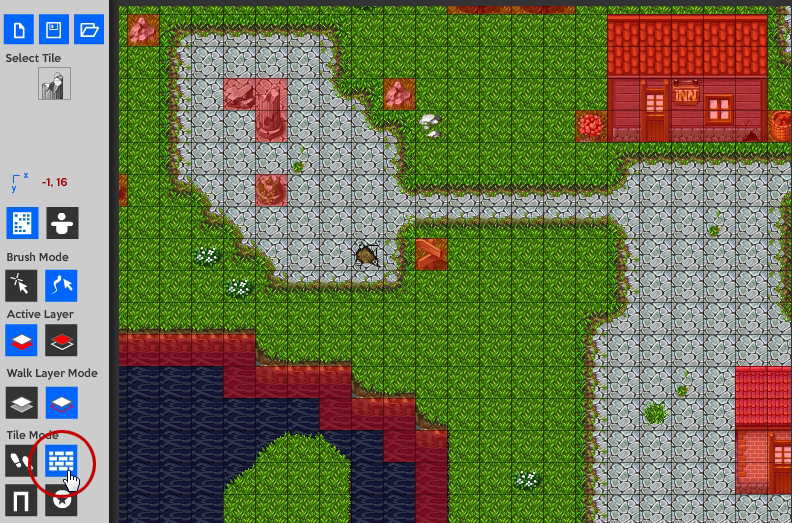

Walkable and unwalkable district rpg maker update#
I even tried to delay the call to the path creation, in case the system would need some time to update the walkable states, with no more success. I tried to call CalculateConnectionsForCellAndNeighbours() every time I change the walkable value, but to no avail. The gizmos in the editor show me the nodes are walkable though, as expected. I even tried to only have a 1x1 unit, and it still behaves like this. Objectives: This study investigated the resilience of single-family housing values in walkable versus unwalkable neighborhoods during the economic downturn from 2008 to 2012 in Dallas, Texas. The problem is that even if I set back its nodes to walkable again before calculating the path, the path will always return a 1 node path, as it the unit was still blocking itself. So when I put a unit on the map, I set all its nodes to unwalkable. I’ll then use a custom ITraversable to check for units of different sizes (but not implemented yet, though, so this is not the problem here). Once the path is complete, I set the nodes of the unit unwalkable again.Just before I compute a path for my unit, I set the same nodes to walkable = true.When I place a unit on the map, I make all the nodes it occupies unwalkable (just by setting the walkable variable to false).After reading the docs, I thought that the simplest approach for me would be: I have to handle differently-sized units, and have to be sure units don’t block themselves. The research suggests several characteristics of liveable and low-carbon cities-including compact urban form, walkability, and open space- have a positive impact on investment returns.I’m making a turn-based game, where each unit will move one after the other. dense development which is thoughtfully designed to promote a high quality of life.Ī new report from the Urban Land Institute and the Coalition for Urban Transitions, entitled Supporting Smart Urban Development: Successful Investing In Density, found that cities with good density are more likely to provide higher risk-adjusted real estate returns. The concept of walkability is intrinsically linked with density, or at least with “good density”, i.e. Sydney is rated the most walkable city in Australia but it only ranked 28th overall. Walk Score vets cities in the US, Canada and Australia for walkability and scores New York – which has been working to improve its environment for some years – the highest. The Walk DVRC initiative envisages the pedestrianisation of Des Voeux Road Central (see image above) in order to improve the environment for pedestrians and to boost retail footfall along the route.ĭata on walkability is hard to find, especially for Asia Pacific. Hong Kong’s compact districts are walkable, but rarely pleasantly so plans are afoot to change this however. There are winners and losers in China too: Shanghai’s city government has made considerable progress with improving walkability, whereas Beijing’s city blocks remain marooned between busy highways.ĭespite being the largest city in the region, Tokyo offers surprising walkability due to wide pavements and a relative lack of congestion and pollution, the latter improved by increasing use of electric vehicles. Meanwhile Jakarta is lacking in pavements and safe crossing spots even in the city’s centre. Singapore – despite a climate which discourages walking – offers plenty of covered and safe pedestrian routes between locations. Shoppers who can move around a district easily are more likely to stay longer and spend more.Īsia Pacific’s dense cities contain examples of both the walkable and unwalkable. Office occupiers place increasing importance on issues of workplace health and are keen to locate in districts where staff can comfortably walk between local amenities and transport nodes.


 0 kommentar(er)
0 kommentar(er)
